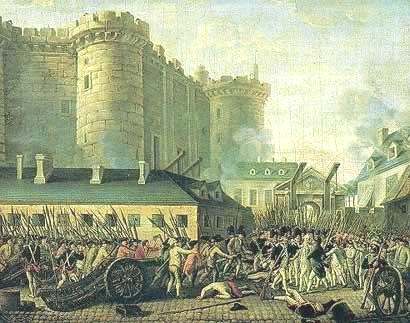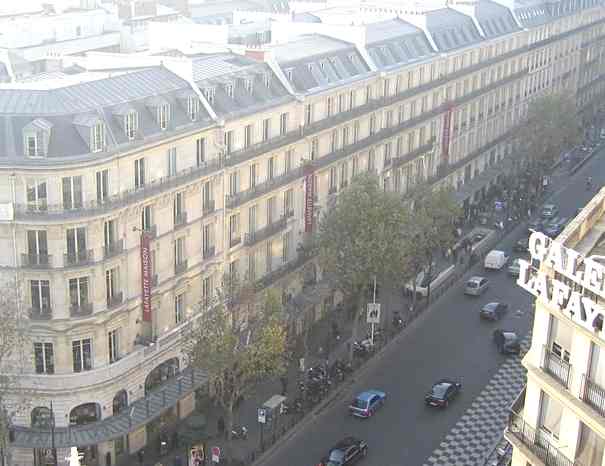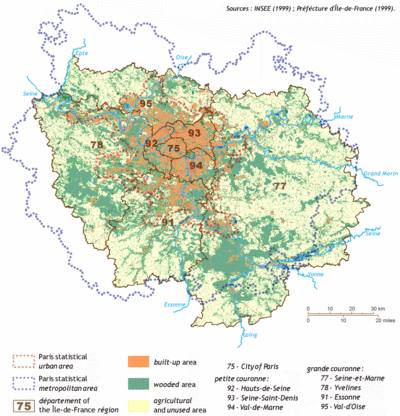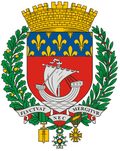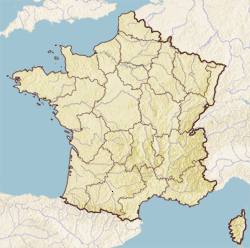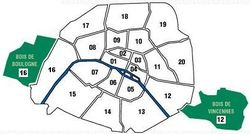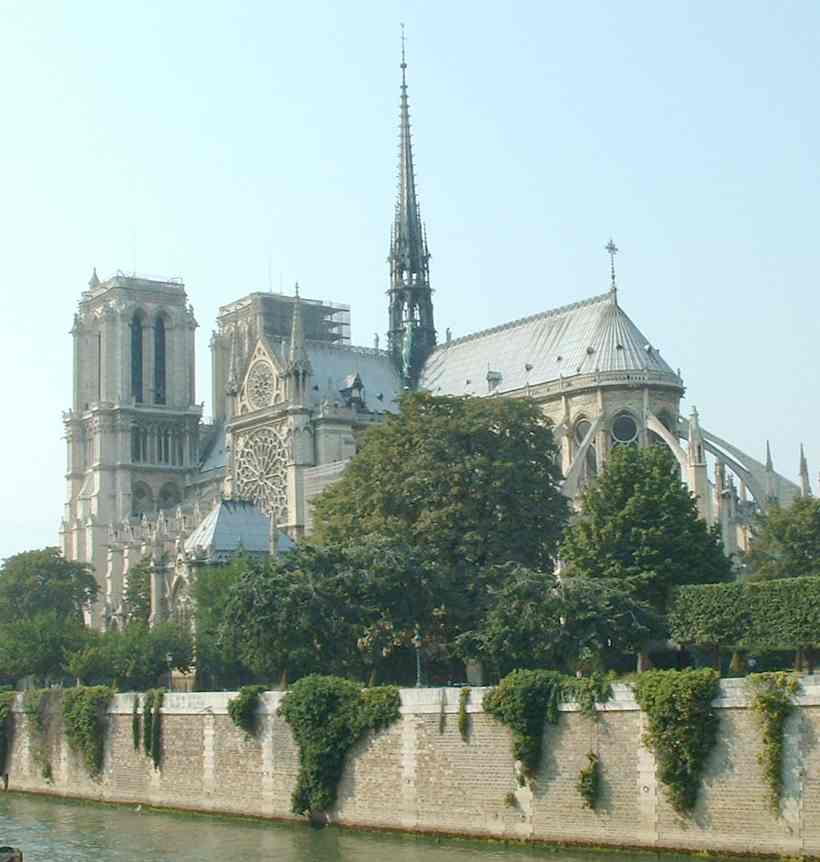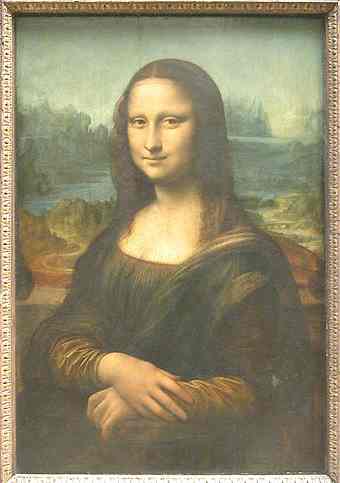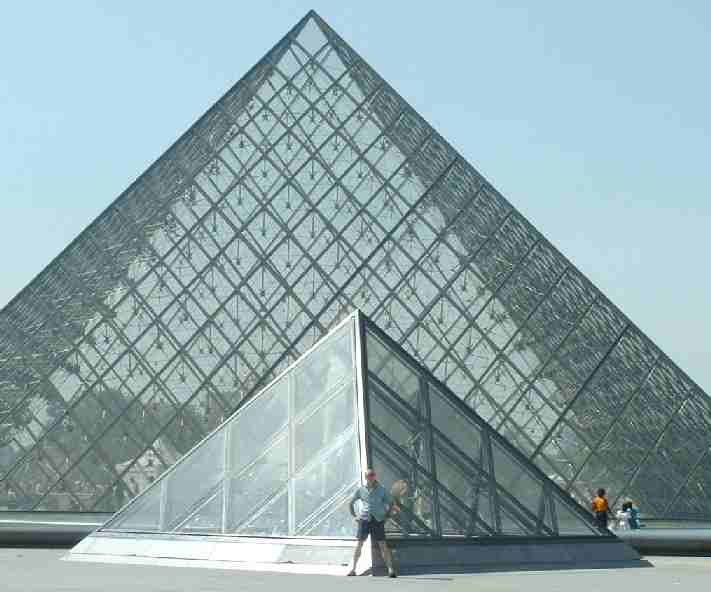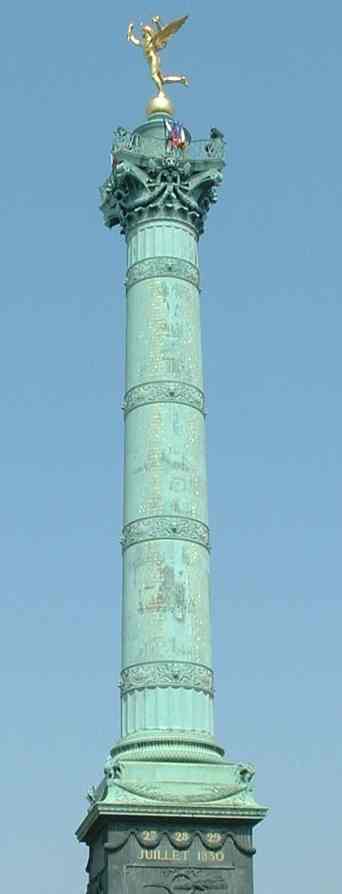|
PARIS
Please use our A to Z INDEX to navigate this site
|
|||||||||||||||||||||||||||||||||||||||||||||||||||||||||||||||||||||||||||||
|
Paris is the capital and largest city of France. It is also the capital of the Île-de-France région which encompasses Paris and its suburbs. Paris is also one of the eight départements of Île-de-France. It is a leading global cultural, business and political center and is renowned for its defining neo-classical architecture as well as its influence in fashion and the arts. It is widely regarded as one of the world's major global cities. Dubbed "the City of Light" (la Ville Lumière) since the 19th century, Paris has a well deserved reputation as a "romantic" city. But be careful, a woman scorned is a dangerous thing. A bunny boiler in the making. In France, a crime of passion allows murder. In the UK and USA, an allegation of assault or rape needs no proof, as a means to avenge rejection.
Our researcher in Paris, marveling at this water feature. Twenty years ago, from August 2 to 17, 2003, France experienced its most prolonged and intense heatwave in the hottest summer since 1950. It was also the most deadly, claiming the lives of 15,000 people in a fortnight.
It was my misfortune to visit Paris with a friend during the heat-wave of 2003. Although, at the time we thought it was just normal heat for Paris in the summer. Since we didn't speak French, we only learned of the issue on return to England. That explained the large number of ambulances. I remember taking a river cruise when after just a few minutes in the sun, my seat was awash. I could feel the trickles of perspiration down my back and my forearms were simply weeping tears at an alarming rate.
Situated on the banks of the river Seine in north-central France, Paris hosts a rich array of museums, galleries, and nightlife and is the most visited city in the world, with more than 30 million visitors per year. The most recognisable symbol of Paris is the 324 metre (1,063 ft) Eiffel Tower on the banks of the Seine.
I was particularly taken with the Maritime Museum, which boasted just about the largest collection of marine art I'd ever seen - especially the figure heads. Some of these are seen at: Solar Lady
Paris inside its administrative limits had an estimated mid-2004 population of 2,144,700 , but over the last century the city has grown well beyond those boundaries. Today, the Paris urban area (the contiguous built-up area) has an estimated population of 9.9 million, and the Paris metropolitan area (including satellite cities) was at 11.5 million in 1999.
Paris and the Île-de-France région produce more than a quarter of France's wealth, with a GDP of nearly €450 billion (US$506.7 billion) in 2003. With nearby La Défense, Europe's largest business district, Paris also hosts the head offices of almost half of all French companies, as well as the offices of major international firms and the headquarters of many international organisations such as UNESCO and the OECD.
Eiffel Tower 2003
The Name
The original Latin name of Paris was Lutetia (/lutetja/), or Lutetia Parisiorum, (French).
Lutèce was later dropped in favour of only Paris. The name derives from the Gallic Parisii tribe, whose name may be from the Celtic Gallic word parios, meaning "cauldron", but this is not certain. 'Paris' may also be a derivative of Celtic-language parisio meaning "the working people" or "the craftsmen."
Traditionally, Paris was known as Paname ([panam]) in French slang ("I'm from Paname"). The inhabitants of Paris are known as Parisians in English, and Parisiens in French.
The pejorative term Parigot is sometimes used in French slang. Locally, inhabitants of the Paris suburbs are known colloquially as banlieusards . Inhabitants of the Île-de-France région (Paris Region) are known officially as Franciliens. Parisians tend to refer to people from outside Île-de-France as provinciaux (i.e. from the provinces).
Geography and climate
Paris is located on a north-bending arc of the river Seine and includes two inhabited islands, the Île Saint-Louis and the larger Île de la Cité which is the heart and origin of the city. Paris has several prominent hills, of which the highest is Montmartre at 130 metres (426½ ft) above sea level. The highest elevation in the urban area of Paris is 195 metres (640 ft) above sea level in the Montmorency forest (Val-d'Oise département), 19.5 km. (12 miles) north-northwest of the center of Paris.
The City of Paris (commune) covers 105.397 square kilometres (40.69 mi²), and is only the 113th largest commune in France (out of 36,782), though the urban area (unité urbaine) (contiguous built-up area) covers 2,723 km² (1,051.4 mi²) (INSEE 1999), or about 26 times as large as the City of Paris. The metropolitan area (aire urbaine) (built-up area plus the commuter belt) reaches beyond the surrounding Île-de-France région to cover 14,518 km² (5,605.5 mi²) (INSEE 1999), or about 138 times as large as the Paris commune. Excluding the outlying parks of Bois de Boulogne and Bois de Vincennes, the City of Paris is 86.928 square kilometres (33.56 mi²).
Paris is divided into twenty arrondissements. The City's administrative borders have remained largely unchanged since 1860, when Napoleon III and prefect Haussmann doubled the area of the city to 78 km² (30.1 mi²) by annexing the land within the city's ring of fortifications (now the 13th through 20th arrondissements). Several former suburbs such as Montmartre and Auteuil were incorporated at that time. The city limits changed marginally in 1920's reaching 86.9 km². In 1929 the Bois de Boulogne and Bois de Vincennes forest parks were also officially incorporated into the city.
Since meteorological records began in 1873, the lowest temperature recorded in Paris was on December 10, 1879: −23.9 °C (−11.0 °F) in central Paris and −25.6 °C (−14.1 °F) in the southeastern suburb of Saint-Maur-des-Fossés. The highest recorded temperature in central Paris was 40.4 °C (104.7 °F) in Parc Montsouris on July 28, 1947. The 2003 heat wave caused the deaths of many elderly people with the temperature in central Paris reaching 38.1 °C (100.6 °F) (Parc Montsouris) and 40.2 °C (104.4 °F) at Le Bourget Airport in the northern suburbs. The highest recorded minimum temperature at night in Paris was 25.5 °C (77.9 °F) in Parc Montsouris on August 11 and August 12, 2003.
Storming of the Bastille by a Parisian mob on July 14, 1789
History
The Celtic Parisii, who were known as boatmen and traders, established a settlement by the River Seine to control river commerce from about 250 BC. The Île de la Cité was traditionally assumed to be the location of the settlement but some evidence now points to the suburb of Nanterre. Rome conquered the region in 52 BC and built the city of Lutetia on the left bank Sainte Geneviève Hill which was protected from river floods. Lutetia expanded and prospered during the ensuing period of peaceful Gallo-Roman cohabitation, but third-century Germanic invasions caused a period of decline. By 400 AD Lutetia had become a garrison town entrenched on the hastily fortified central island. The city reclaimed its original name of "Paris" towards the end of the Roman occupation.
Middle Ages
From AD 512, Paris was the capital of the Frankish king Clovis I, who commissioned the first cathedral and abbey. On the death of Clovis, the Frankish kingdom was divided with Paris as the capital of a much smaller kingdom. By the time of the Carolingian dynasty (9th century), it was little more than a feudal county stronghold. The Counts of Paris gradually rose to prominence and eventually wielded greater power than the Kings of Francia occidentalis. Odo, Count of Paris was elected king in place of the incumbent Charles the Fat, after Odo defended Paris in the Viking siege of 885-886. The Counts of Paris continued to defend France against Viking attack in the ninth century, but the Vikings irreparably damaged the old Roman city on the Left Bank. Nearby marshlands were drained to allow Paris to grow on the Right Bank. In 987 AD, Hugh Capet, Count of Paris, was elected King of France, founding the Capetian dynasty which would raise Paris to become France's capital.
From 1190, King Philip Augustus enclosed Paris on both banks with a wall that had the Louvre as its western fortress and in 1200 chartered the University of Paris which brought visitors from across Europe. During this period the modern spatial distribution of activities began to emerge: the central island housed government and ecclesiastical institutions, the left bank became a scholastic centre with the University and colleges, while the right bank developed as the centre of commerce and trade around the central Les Halles marketplace.
Paris was occupied during the Hundred Years' War by the Burgundians, allied to the English. Although Joan of Arc failed to reconquer the city in 1429, a successful reconquest took place in 1437. However, the Kings of France abandoned Paris in favour of the Loire Valley. During the French Wars of Religion, Paris was a stronghold of the Catholic party, culminating in the St. Bartholomew's Day massacre (1572). King Henry IV re-established the royal court in Paris in 1594 after he captured the city from the Catholic party. During the Fronde, Parisians rose in rebellion and the royal family fled the city (1648). King Louis XIV then moved the royal court permanently to Versailles in 1682. A century later, Paris was the centre stage for the French Revolution, with the Storming of the Bastille in 1789 and the overthrow of the monarchy in 1792.
Nineteenth Century
The Industrial Revolution, the French Second Empire, and the Belle Époque brought Paris the greatest development in its history. From the 1840s, rail transport allowed an unprecedented flow of migrants into Paris attracted by employment in the new industries in the suburbs. The city underwent a massive renovation under Napoleon III and his préfet Haussmann, who leveled entire districts of narrow-winding medieval streets to create the network of wide avenues and neo-classical façades of modern Paris.
"Haussmann"-style avenue and architecture
Cholera epidemics in 1832 and 1849 affected the population of Paris (the 1832 epidemic alone claimed 20,000 of the then population of 650,000. Paris also suffered greatly from the siege ending the Franco-Prussian War (1870-1871), and the ensuing civil war Commune of Paris (1871) killed thousands and sent many of Paris' administrative centres (and city archives) up in flames.
Paris recovered rapidly from these events to host the famous Universal Expositions of the late nineteenth century. The Eiffel Tower was built for the French Revolution centennial 1889 Universal Exposition, as a "temporary" display of architectural engineering prowess but remained the world's tallest building until 1930, and today is the city's best-known landmark. The first line of the Paris Métro opened for the 1900 Universal Exposition and was an attraction in itself for visitors from the world over. Paris's World's Fair years also consolidated its position in the tourist industry and as an attractive setting for international technology and trade shows.
Twentieth Century
During World War I, Paris was at the forefront of the war effort, having been spared a German invasion by the French and English victory at the First Battle of the Marne in 1914. In 1918-1919, it was the scene of Allied victory parades and peace negotiations. In the inter-war period Paris was famed for its cultural and artistic communities and its nightlife. The city became a melting pot of artists from around the world, from exiled Russian composer Stravinsky and Spanish painters Picasso and Dalí to American writer Hemingway. In June 1940, five weeks after the start of the German attack on France, a partially-evacuated Paris fell to German occupation forces, who remained there until Free French troops of General Leclerc liberated the city in late August 1944. The city suffered almost no war damage partly due to the refusal of the German military commander, General von Choltitz, to carry out Hitler's direct order to destroy all monuments before evacuating the city.
In the post-war era, Paris experienced its largest development since the end of the Belle Époque in 1914. The suburbs began to expand considerably, with the construction of large social estates known as cités and the beginning of the business district La Défense. A comprehensive express subway network, the RER, was built to complement the Métro and serve the distant suburbs, while a network of freeways was developed in the suburbs, centered on the Périphérique expressway circling around the city. Many inner suburbs of Paris (especially the eastern ones) have experienced de-industrialisation since the 1970s, and the once-thriving cités have gradually become ghettos for immigrants and oases of unemployment. The widening social gap between these disadvantaged suburbs and the wealthier suburbs (especially the western ones) have led to periodic unrest since the mid-1980s, such as the 2005 riots.
Demographics
The City of Paris is much smaller than the urban agglomeration that is associated with it, and has distinct demographic trends. At present, the city's urban area occupies three neighbouring départements (also known as petite couronne (inner ring)) and extends into an additional four départements (also known as grande couronne (outer ring)) in the outer reaches of the Île-de-France région.
The population of the City of Paris was 2,125,246 at the 1999 census, lower than the historical peak of 2.9 million in 1921. This decline was due to the relocation of people to the suburbs caused by de-industrialisation, high rent, the gentrification of many inner quarters and the transformation of living space into offices, although not on the scale seen in some Western cities. These tendencies are generally seen as negative for the city, and the current city administration is trying to reverse them with some success, as the population estimate of July 2004 shows a population increase for the first time since 1954 reaching a total of 2,144,700 inhabitants.
The population of the whole Paris agglomeration, however, has been growing steadily since the end of the late 16th-century French Wars of Religion, excepting brief setbacks during the French Revolution and World War II. Suburban development is accelerating, and with an estimated total of 11.6 million inhabitants for 2005 the Paris metropolitan area shows a rate of growth double that of the 1990s (the population growth rate of Île-de-France was 0.62% per year between 1999 and 2005 vs. 0.31% per year between 1990 and 1999.
The City of Paris is the most densely populated area in the western world after the island of Manhattan in New York City. Excluding the outlying woodland parks of Boulogne and Vincennes, its density was 24,448 inh. per km² (63,321 inh. per sq. mile) in 1999 official census. Paris has maintained a relatively balanced distribution of apartment residences, office spaces and commercial activities catering to both, although some districts have lost much of their apartment housing to office renovations, partly contributing to the population decline seen since the 1920's.
Paris' most sparsely populated quarters are its office and administration-charged arrondissements located in its Western and Central portions. The city is at its densest in its northern and eastern arrondissements; its 11th arrondissement had a density of 40,672/km² (105,339/sq. mile) in 1999, and some of the same arrondissement's eastern quarters showed densities close to 100,000/km² (260,000/sq. mile) the same year.
The Paris region is one of the most multi-cultural in Europe, with 19.4% of its total population born outside of metropolitan France. As of 1999, 4.2% of those living within the Paris region were recent migrants (post-1990 census arrivals) in their majority from mainland China and Africa.
Paris boasts many competent street artists - River Seine
A so-called "muséification" (museumification) of the city of Paris is a concern to some. 81% of people in the Paris metropolitan area live outside of the city proper (1999 census figures), and many of Paris' institutions and economic infrastructure are located in or moving to the suburbs. The financial (La Défense) business district, the main food wholesale market (Rungis), major renowned schools (École Polytechnique, HEC, ESSEC, INSEAD, etc.), world famous research laboratories (in Saclay or Évry), the largest sport stadium (Stade de France), and some ministries (namely the Ministry of Transportation) are located outside of the city of Paris. The National Archives of France are due to relocate to the northern suburbs before 2010.
Economy
The Paris economy includes that of the City of Paris and the surrounding suburbs and satellite cities of the Île-de-France région (also known as the Paris region). The Paris region is an engine of the global economy, with a 2003 GDP of €448,933 billion (US$506.7 billion). In 2003, the Paris region would have ranked as the fifteenth largest economy in the world, above both Russia and Brazil.
In 2004, the Paris region was about 29% of the total GDP of metropolitan France, although its population was 18.7% of the total population of metropolitan France. In 2002, according to Eurostat, the Paris region's GDP was 4.5% of the total GDP of the 25 European Union states, although its population was 2.45% of the total European Union population.
The economic centre of the Paris metropolitan area is in the western half of the city proper and the central portion of the Hauts-de-Seine département, forming a triangle between the Opéra Garnier, La Défense and the Val de Seine. As a consequence some workers commute from the suburbs to work in the city, and others commute from the city to work in the suburbs. At the 1999 census 47.5% of the 5,089,170 people in employment in the metropolitan area worked in the city of Paris and the Hauts-de-Seine département (only 31.5% worked exclusively in the city proper).
Although the Paris economy is largely dominated by services, it remains an important manufacturing powerhouse of Europe, especially in industrial sectors such as automobiles, aeronautics and high-technologies. Over recent decades, the local economy has moved towards high value-added activities, in particular business services.
The 1999 census indicated that of the 5,089,170 persons employed in the Paris metropolitan area, 16.5% worked in business services, 13.0% in commerce (retail and wholesale trade), 12.3% in manufacturing, 10.0% in public administrations and defense, 8.7% in health services, 8.2% in transportation and communications, 6.6% in education, and the remaining 24.7% in many other economic sectors. Among the manufacturing sector, the largest employers were the electronic and electrical industry (17.9% of the total manufacturing workforce in 1999) and the publishing and printing industry (14.0% of the total manufacturing workforce), with the remaining 68.1% of the manufacturing workforce distributed among many other industries. The tourism industry and tourist related services, employ 4.7% of the total workforce of Île-de-France (in 1999), and 7% of the total workforce of the city of Paris proper.
Office occupancy costs in Paris are considerably higher than in most other European cities. In 2002, a report published by the leading real estate advisory company, DTZ, showed that the total office occupancy cost in Paris was approximately 826.56 euros per m² per annum, behind London where the cost was 1496.32 euros. The cost in Frankfurt, Munich and Brussels was 672, 414.4 and 275.52 respectively.
Administration
The city of Paris is a commune (municipality), divided into twenty municipal arrondissements numbered in a clockwise spiral outward from the Ier arrondissement at the centre. The two parks on the edge of the city proper, Bois de Boulogne and Bois de Vincennes, belong to the 16th and 12th arrondissements respectively. Each arrondissement has a directly-elected council (conseil d'arrondissement), which in turn elects the arrondissement mayor. A selection of members from each arrondissement council form the Council of Paris (conseil de Paris), which elects the mayor of Paris, a position created in 1977.
The arrondissements of Paris
The city of Paris is also département no. 75, which is a unique status solely introduced for the capital city. The Council of Paris, presided by the Mayor of Paris, is the single council for both entities, meeting either as municipal council (conseil municipal) or as departmental council (conseil général) depending on the issue to be debated. Number 75 was the official number of the Seine département, which encompassed the city of Paris and its nearest suburbs. In 1968, Seine was split into four new départements: the city of Paris proper (which retained no. 75) and the départements of Hauts-de-Seine (92), Seine-Saint-Denis (93), and Val-de-Marne (94). The latter départements form a ring around Paris often called petite couronne ("small ring"), as opposed to the grande couronne ("large ring") of the more distant suburbs.
The State appointed Prefect of Paris, not to be confused with the Prefect of Police, is the representative of the French State in the Paris département, in charge of the control of legality as in other French départements. The Prefect of Paris is at the same time regional Prefect of Île-de-France, in charge of some economic development and urban planning issues for the whole région of Île-de-France. The jurisdiction of the Prefecture of Paris (Prefecture of the Seine until 1968) is now strictly limited to the city of Paris. The Prefecture of Police jurisdiction, formerly the whole Seine département, is now limited to Paris proper, but for some matters (such as fire protection or rescue operations), it still covers the three départements of the petite couronne. The State-appointed prefect of Police is also in charge of public order and the Paris Fire Brigade). Although Paris has no municipal police force, it does have its own traffic wardens.
Paris is also the préfecture, or capital city, of the Île-de-France région which was created in 1976 to replace the District of the Paris Region created in 1961. Île-de-France encompasses eight départements: the Paris département, the three départements of the petite couronne, and the four larger départements of the grande couronne (Val-d'Oise (95), Yvelines (78), Essonne (91) and Seine-et-Marne (77)).
The Île-de-France région, the seven départements of petite couronne and grande couronne, and the hundreds of suburban communes around the city of Paris all have separate administrations, resulting in an extremely complex administrative grid. Proposals for a more efficient metropolitan structure to cover the city of Paris and some of the suburbs range from the socialist idea of a loose "metropolitan conference" (conférence métropolitaine) to the right-wing idea of a more integrated Grand Paris ("Greater Paris").
Notre Dame from the River Seine
Transport
Paris is served by two principal airports: Orly Airport, which is south of Paris, and the Charles de Gaulle International Airport in nearby Roissy-en-France, one of the busiest in Europe. A third and much smaller airport, at the town of Beauvais, 70 km (45 mi) to the north of the city, is used by charter and low-cost airlines. Le Bourget airport nowadays only hosts business jets, air trade shows and the aerospace museum.
Paris is a central hub of the national rail network of high-speed (TGV) and normal (Corail) trains. Six major railway stations, Gare du Nord, Gare Montparnasse, Gare de l'Est, Gare de Lyon, Gare d'Austerlitz, and Gare Saint-Lazare connect this train network to the world famous and highly efficient Métro network, with 380 stations connected by 221.6km of rails. Because of the short distance between stations on the metro network, lines were too slow to be extended further in the suburbs as it's the case in most other cities. As such, an additional express network, known as the RER, has been created since the 1960's to connect more distant parts of the agglomeration.
There are two tangential tramway lines in the suburbs: Line T1 runs from Saint-Denis to Noisy-le-Sec, line T2 runs from La Défense to Issy. A third line along the southern inner orbital road is currently under construction.
The public transportation networks of the Paris region are coordinated by the Syndicat des transports d'Ile-de-France (STIF), formerly Syndicat des transports parisiens (STP). Members of the syndicate include the RATP, which operates the Parisian and some suburban busses, the Métro, and sections of the RER; the SNCF, which operates the suburban rail lines and the other sections of the RER ; and other private operators managing some suburban bus lines.
The city is also the hub of France's motorway network, and is surrounded by three orbital freeways : the Périphérique which roughly follows the path of 19th-century fortifications around Paris, the A86 autoroute freeway in the inner suburbs, and finally the Francilienne freeway, also known as the A104, in the outer suburbs. Paris has an extensive road network with over 2000 kilometres of major roads and highways. By road Brussels can be reached in three hours, Frankfurt in 6 hours and Barcelona in 12 hours.
The Mona Lisa, one of the Louvre's most famous treasures
CultureMonuments and Landmarks
Three of the most famous Parisian landmarks are the twelfth century cathedral Notre Dame de Paris on the Île de la Cité, the nineteenth century Eiffel Tower, and the Napoleonic Arc de Triomphe. The Eiffel Tower was a "temporary" construction by Gustave Eiffel for the 1889 Universal Exposition but the tower was never dismantled and is now an enduring symbol of Paris. It is visible from many parts of the city as are the Tour Montparnasse skyscraper and the Basilica of the Sacré Cœur on the Montmartre hill.
The Historical axis is a line of monuments, buildings and thoroughfares that run in a roughly straight line from the city centre westwards: the line of monuments begins with the Louvre and continues through the Tuileries Gardens, the Champs-Elysées and the Arc de Triomphe centred in the Place de l'Étoile circus. From the 1960's line was prolonged even further west to the La Défense business district dominated by square-shaped triumphal Grande Arche of its own; this area hosts most of Paris' tallest skyscrapers.
The Invalides museum is the burial place for many great French soldiers, including Napoleon, and the Panthéon church is where many of France's illustrious men and women are buried. The former Conciergerie prison held some prominent ancien régime members before their deaths during the French Revolution. Another symbol of the Revolution are the two Statues of Liberty located on the Île des Cygnes on the Seine and in the Luxembourg Garden. A larger version of the statues was sent as a gift from France to the United States in 1886 and now stands in New York City harbour.
The Palais Garnier built in the later Second Empire period, houses the Paris Opera and the Paris Opera Ballet, while the former palace of the Louvre now houses one of the most famous museums in the world. The Sorbonne is the most famous part of the University of Paris and is based in the centre of the Latin Quarter. Apart from Notre Dame de Paris, there are several other ecclesiastical masterpieces including the Gothic thirteenth century Sainte-Chapelle palace chapel and the Église de la Madeleine.
The Louvre - guess who in the forefront?
Museums
The Louvre is one of the largest and most famous museums, housing many works of art, including the Mona Lisa (La Joconde) and the Venus de Milo statue. Works by Pablo Picasso and Rodin are found in Musée Picasso and Musée Rodin respectively, while the artistic community of Montparnasse is chronicled at the Musée du Montparnasse. Starkly apparent with its service-pipe exterior, the Centre Georges Pompidou, also known as Beaubourg, houses the Musée National d'Art Moderne. Lastly, art and artifacts from the Middle Ages and Impressionist eras are kept in Musée Cluny and Musée d'Orsay respectively, the former with the prized tapestry cycle The Lady and the Unicorn.
Districts and historical centres
- Place de la Bastille - former eastern stronghold and gate of Paris. - Champs-Élysées - seventeenth century garden-promenade turned avenue connecting the Concorde and Arc de Triomphe. - Place de la Concorde/Place Vendome - home to the Hôtel de Crillon and Hotel Ritz. - Place de la Concorde - at the foot of the Champs-Élysées, built as the "Place Louis XV", site of the infamous guillotine. The Egyptian obelisk it holds today can be considered Paris's "oldest monument". - La Défense - one of the largest business districts in the world and a major destination for business tourism. - Les Halles - shopping precinct around an important metro connection station. - Quartier Latin - twelfth century scholastic centre formerly stretching between the Left Bank's Place Maubert and the Sorbonne campus. - Le Marais - trendy Right Bank district with large gay and Jewish populations - Montmartre - historic area on the Butte, home to the Basilica of the Sacré Coeur and the studios and cafés of many great artists. - Montparnasse - historic Left Bank area famous for artists studios, music halls, and café life. - L'Opéra - The area around Paris' Opéra Garnier is a home to the captial's densest concentration of both department stores and offices. A few examples are the Printemps and Galeries Lafayette "grande surface" shopping centres, and the Paris headquarters for financial giants such as the Crédit Lyonnais and American Express. - Faubourg Saint-Honoré - One of Paris' two high-fashion districts, home to labels such as Hermès and Christian Lacroix. - Avenue Montagne - Home to Luxury brand labels such as Chanel, Louis Vuitton (LVMH), Dior and Givenchy
The
Arc de Triomphe -
Sports
Paris's main sports clubs are the football club Paris Saint-Germain, the basketball team Paris Basket Racing and the rugby union club Stade Français. The 80,000-seat Stade de France was built for the 1998 FIFA World Cup and is used for football and rugby. Paris also hosted the 1900 and 1924 Olympic Games and was venue for the 1938 and 1998 FIFA World Cup. Although the starting point and the route of the famous Tour de France varies each year, the final stage always finishes in Paris and since 1975, the race has finished on the Champs-Elysées. Also one of the biggest sports in Paris and throughout France is tennis. Each year the French Open is held on the red clay at Roland Garros.
Paris will host the 2007 Rugby World Cup final at Stade de France on 20 October 2007.
City Function
Water & Sanitation
After depending on the Seine and Bièvre rivers for water, a first-century Roman aqueduct (left to ruin), sources from the local hills from the late 11th century and a longer 15th-century aqueduct built roughly along the path of the first, Paris would have its first reliable and plentiful source of drinkable water from the late 19th-century. Again the works of Préfet Haussmann and the civil engineer Eugène Belgrand, a network sources from ever more distant locations brought water to reservoirs in the highest points of the Capital for distribution to even the top floors of its then highest constructions. This new adduction was built as the second level of a two-level system; the new sources became the Capital's drinking water, and the older network, made up of the remains of all the above systems, was dedicated to the cleaning of Paris' streets.
Paris has over 2,400 km of underground passageways dedicated to the evacuation of Paris' liquid wastes. Most of these even today date from the late 19th century, a result of the combined plans of the Préfet Haussmann and the civil engineer Eugène Belgrand to improve the then very unsanitary conditions in the Capital. Maintained by a round-the-clock service since their construction, only a small percentage of Paris' sewer réseau has needed complete renovation. The entire Paris network of sewers and collectors is been managed since the late 20th century by a computerised network system, known under the acronym "G.A.AS.PAR", that controls all of Paris' water distribution, even the flow of the river Seine through the capital.
Bastille monument
Parks & Gardens
Two of Paris's most famous gardens are the Tuileries Garden on the banks of the Seine next to the Louvre and the centrally-located Luxembourg Garden, which used to belong to a château built for the Marie de' Medici. During the Second Empire, Napoleon III created three vast gardens on the outskirts of Paris: Montsouris, Buttes Chaumont in the northeast, and Parc Monceau, formerly known as the folie de Chartres, in the northwest. On the western and eastern perimeters respectively are the two "forests", the Bois de Boulogne and Bois de Vincennes.
LINKS and REFERENCES
Solar Cola drinkers care about planet earth
.. Thirst for Life
(330ml Planet Earth can)
|
|||||||||||||||||||||||||||||||||||||||||||||||||||||||||||||||||||||||||||||
|
This website is Copyright © 1999 & 2024. The bird logos and name Solar Navigator are trademarks. All rights reserved. All other trademarks are hereby acknowledged. Max Energy Limited is an educational charity working hard for world peace.
|
|||||||||||||||||||||||||||||||||||||||||||||||||||||||||||||||||||||||||||||

